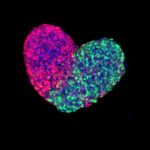Link to Pubmed [PMID] – 29453124
Curr. Opin. Microbiol. 2018 10;45:16-21
Bacterial chemotaxis is a classical subject: our knowledge of its molecular pathway has grown very detailed, and experimental observations, as well as mathematical models of the dynamics of chemotactic populations, have a history of several decades. This should not lead to the conclusion that only minor details are left to be understood. Indeed, it is believed that bacterial chemotaxis is under selection for efficiency, yet the underlying functional forces remain largely unknown. These aspects are discussed here by the presentation of illustrative examples related to the role of adaptation and signal integration. Both are expected to be important in ecologically relevant conditions, where chemotaxis should be strongly coupled with metabolism and growth, due to the presence of diverse chemoattractant cues and their active consumption by multiple types of bacteria competing for growth.

